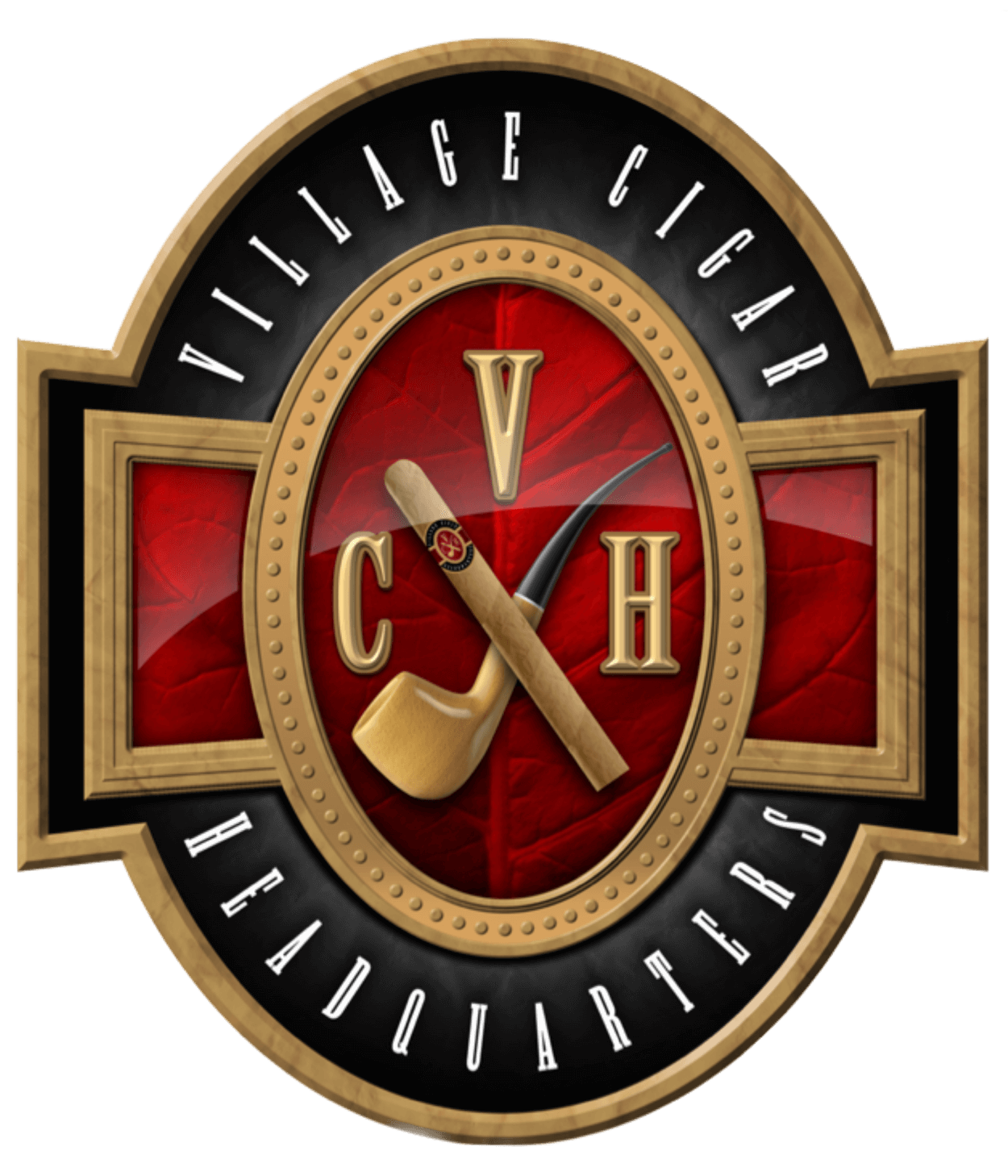Cigar History
Tobacco is an organically grown plant. No one knows when the first tobacco plant was discovered, however it is known that it was found in the Mexican Yucatan peninsula. It is known that the tobacco plant was used during the Maya civilization in Central America. When the Maya civilization fell, clans moved to North and South America.
In 1492, when Christopher Columbus found his way to the North American continent, he came across Native Americans smoking tobacco. From that point on, people began to smoke tobacco and it spread throughout Spain and Europe.
The premium, hand-rolled cigar as we know it today has changed little from those first rolled in Seville, Spain. In 1831 King Ferdinand VII granted Cubans the right to grow and sell tobacco in their homeland. In the US, tobacco was grown in various regions of the original British colonies. General Putnam is attributed with bringing tobacco to the state of Connecticut after serving in Cuba with the British Army in 1762.
After the Revolutionary War, tobacco factories sprang up in southern New England as well as Pennsylvania and New York. The word “stogie” is derived from Conestoga, Pennsylvania.
Cigar smoking in America had a dramatic rise during the Civil War era. Most cigars were made of domestic wrappers and Cuban fillers. Political upheaval in Cuba in the late 1800’s forced many manufacturers to flee to the U.S. The first revolution in Cuba took place in 1895, freeing the country from Spain’s control. Jose Marti supported by Teddy Roosevelt and his famous Rough Riders at San Juan Hill led this revolt.
The cigar and its myth of wealth and power have been popularized in modern times by many well-known figures in film and politics, here and abroad. From Bogart to Milton Berle, Edward G. Robinson, George Burns, MacArthur to Einstein and perhaps the most well known man of our century, Sir Winston Churchill.
Later in the ensuing years, the popularity and sophistication of tobacco products has widely grown and the 1990s has brought to us a significant increase in the popularity of cigars in the United States and a dramatic increase in the sales of imported premium cigar products.
Despite much of the controversy surrounding the use of tobacco products, the status of fine cigars as a luxury product in the American culture seems secure.
Your guests will truly appreciate the art of live cigar rolling right in front of them. We specialize in many events such as weddings, fundraisers, golf tournaments, birthdays, retirement parties, bachelor parties, corporate parties and VIP events. Our experienced cigar rollers will add that special touch that will make your event stand out from all the rest.
Cigar Wrapper Color
Cigar wrappers come in a variety of colors. The variation in cigar wrapper color is a result of how the wrapper leaf is processed, as well as the color variations among different types of tobacco and the amount of sunlight a leaf is exposed to.
There are seven basic cigar wrapper colors, although there are many subtle shades among these basic colors. There are over 100 different cigar wrapper shades that are identified by manufacturers, but are broadly classified into seven main groups.
From light to dark, the seven commonly used cigar wrapper shades are listed below.
Double Claro
Also called Candela or American Market Selection. This is a very light, slightly greenish to yellow shade that is achieved by a heat-assisted fast drying process that retains the chlorophyll content of wrapper leaves. These wrappers have a very mild flavor and were once popular, but now have gone out of fashion.
Claro
A shade-grown tobacco that has a light, tan color wrapper. These are usually grown under shade tents where the leaves are picked before they mature, and are then quickly air-dryed. Claro wrappers are relatively neutral or mild in flavor.
Colorado Claro or Natural
A light brown cigar wrapper color that is most often sun-grown. Also known as EMS (English Market Selection) wrappers.
Colorado
A medium-brown to brownish-red shade of wrapper leaf color. Usually shade-grown and characterized by a rich or strong flavor, with some being sweet and subtle aroma.
Colorado Maduro
Darker than a colorado and lighter than a maduro. The most notable wrapper in this color is the African wrapper from Cameroon. It is also grown in Honduras or Nicaragua from Cuban seed.
Maduro
A wrapper color varying from a dark reddish-brown to very dark brown. Maduro means “ripe” in Spanish, a reference to the longer process needed for this kind of cigar wrapper color. The wrapper leaves have a very long fermentation period or are either cooked in a pressure chamber. They can vary in taste from sweet through mellow, to strong earthly flavors with a mild aroma. These are primarily grown in Connecticut, Mexico, Nicaragua and Brazil.
Oscuro
Typically darker than the maduro color shade and is almost black. This wrapper is produced by leaving the wrapper leaves on the plant for a longer time. Only the leaves from the top part of the tobacco plant are used, which have had the most sun and are also fermented the for a longer period of time. This wrapper is sometimes called “black” or “negro” and mainly grown in Cuba, Nicaragua, Brazil, Mexico, and Connecticut, USA.
Sun Grown & Shade Grown Wrappers
Tobacco plants that are grown for wrappers under a shaded tents or cloth tarps are called Shade Grown. These large tents diffuse the sunlight, giving a more uniform texture and smoother surface to the wrapper leaves. Sun Grown are tobacco plants grown directly in the sun and they are thicker with more veins. Shade grown leaves are lighter in color compared to Sun grown leaves which produce a darker wrapper.
There are many types of cigar wrappers grown around the world. Below are some names of wrapper tobacco leaves that are grown around the world. (Note: this is not a complete list, just an example of some of the most popular wrapper tobacco grown.)
Connecticut Shade
This claro wrapper leaf is one of the highest-quality wrapper leaves and is the most expensive in the industry. Its distinctive light, golden brown color is attained by growing it in the shade of huge tents in the Connecticut River Valley.
Connecticut Broadleaf
Also from the Connecticut River Valley, this maduro wrapper leaf is grown in the sun, which results in a darker and sweet wrapper.
Ecuadorian Shade Grown
The wrapper is grown in a region of Ecuador that receives consistent cloud cover throughout the growing season and is also said to be “Cloud-Grown.” This naturally diffused light produces a cigar wrapper with a silky texture and fine-veined structure, and creates a leaf with consistent color.
Cameroon Wrapper
This African country produces a sun-grown wrapper with rich flavors and sweet aromas. They are dark brown and can be found in popular cigar brands such as Arturo Fuente & others.
HABANA 2000 (H2000)
This is a newer wrapper made from Cuban Seed tobacco grown in Nicaragua.

Upcoming Events
Coming Soon
Locations
Babylon
212 East Main St.
Babylon NY, 11702
Store: (631) 321-4180
Mon - Sun 9:00am - 11pm
Patchogue
90 East Main St. Suite A
Patchogue NY, 11772
Store: (631) 307-9033
Mon - Thurs: 10am - 10pm
Fri & Sat: 10am - 11pm
Sunday: 10am - 8pm
*Hours Subject To Change For Special Events, Sporting Events And PPV’s*
What The People Say:
-
I was looking for a cigar lounge in the area where I could sit back and enjoy a nice cigar without suffering the cold of the winter. What I found was a home away from home. I have been to many other cigar lounges over the years and VCH is second to none. As soon as you walk in, you are made to feel comfortable both by the open layout and the welcoming people. The cigar quality and selection is outstanding, the ventilation is excellent and the staff is extremely knowledgeable. I really enjoy trying new cigars recommended by Miguel, Eddie and AJ.
I would highly recommend Village Cigar Headquarters to anyone looking to simply pick up a stick or come and hang out with a great bunch of people. - Christopher W. -
"We used Village Cigar for our wedding. They are extremely professional and our order was ready on time. We ordered 75 custom hand rolled cigars and they have a ton of options for events. Our guests loved having the cigars there and everyone enjoyed them! We would definitely recommend using them." - Lawrence Robertson -
"Great store and wonderful owner! Awesome selection of cigars and related paraphernalia."- Ray Kopeck -
"Located just behind the library on main st.def worth stopping in to pick up a few cigars or try some new." -
Thomas Koska -
"Great atmosphere. Friendly and knowledgeable staff. Hired Miguel to roll cigars at my wedding and they did an even better job than what was expected."- Michael King -
"Great Cigar shop! Plenty to choose from and the service was professional. "I'll Be Back!" - Ray Qbee -
"Owner is so down to earth and hands on. Really knows his cigars. Very helpful and patient to all aficionados from new to seasoned cigar smokers. A must visit whenever in the area. Great crowd." - Michael Placido -
"Love this spot. Miguel always give personal service. It's really a gem!" - Paul A -
"Great place, Amazing staff and owners. Knowledgeable, welcoming and friendly. Patrons are awesome and help make the experience great." - Dan Colon -
"Unlike the dingy smoke filled cigars parlors of the past, VCH is an ultra modern lounge. It’s clean and vibrant. The thing I love about this place is the vibe. It’s not the regular group of people talking about how it used to be… It brings people that talk about how it is. Not only can you find legendary blends like Romeo, Montes or Fuentes but the boutique lines like Viaje or Pura Soul are exceptional. VCH’s signature line the Exclusivo may be the best of the bunch in here.
Miguel and staff brought the best of Key West to New York!"- John Milovic

History
Village Cigar HQ Babylon is a specialty shop nestled in the Village of Babylon. We are the home of the world’s finest premium cigars and luxurious tobacco accessories.
Our elegant & classy establishment is full of unique products you will not find anywhere else. We invite both men and women, smoker or non smoker to come down and experience a mystical and unique journey upon entering "The Cigar Museum".
As a family business, we have over 25 years experience in the tobacco & retail industry.
Whether our Tobacco Specialists are educating our guests on certain cigars or planning a cigar rolling event, our main goal is to provide every one of our guests exceptional service.
© Village Cigar Headquarters
All Rights Reserved 2021
Patchogue
90 East Main St. Suite A
Patchogue NY, 11772
Store: (631) 307-9033
Fax: (631) 307-9034
Babylon
212 East Main St.
Babylon NY, 11702
Store: (631) 321-4180

Technology Provided by:
TZDesignstudio















